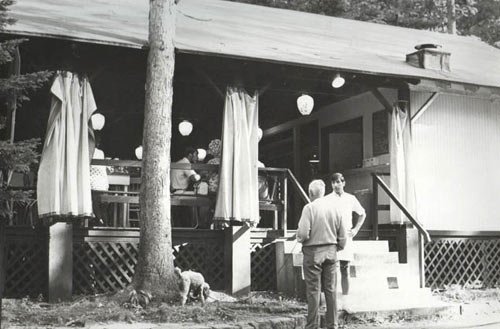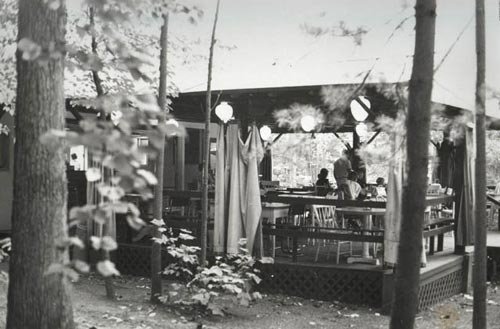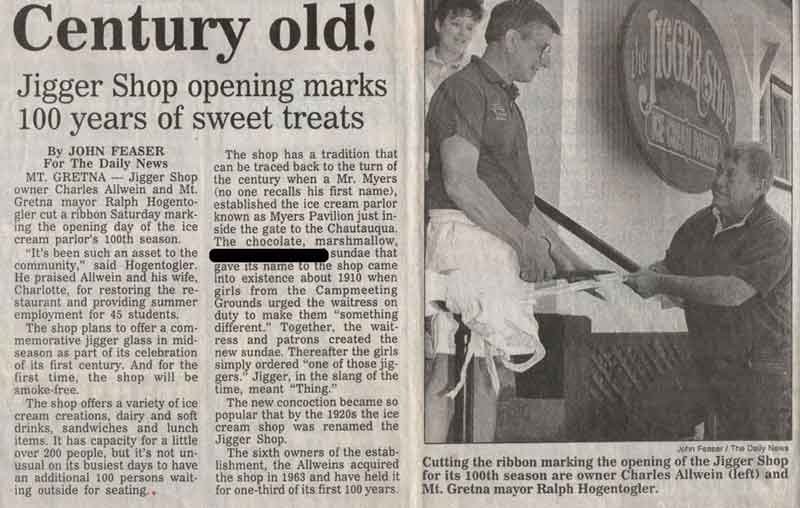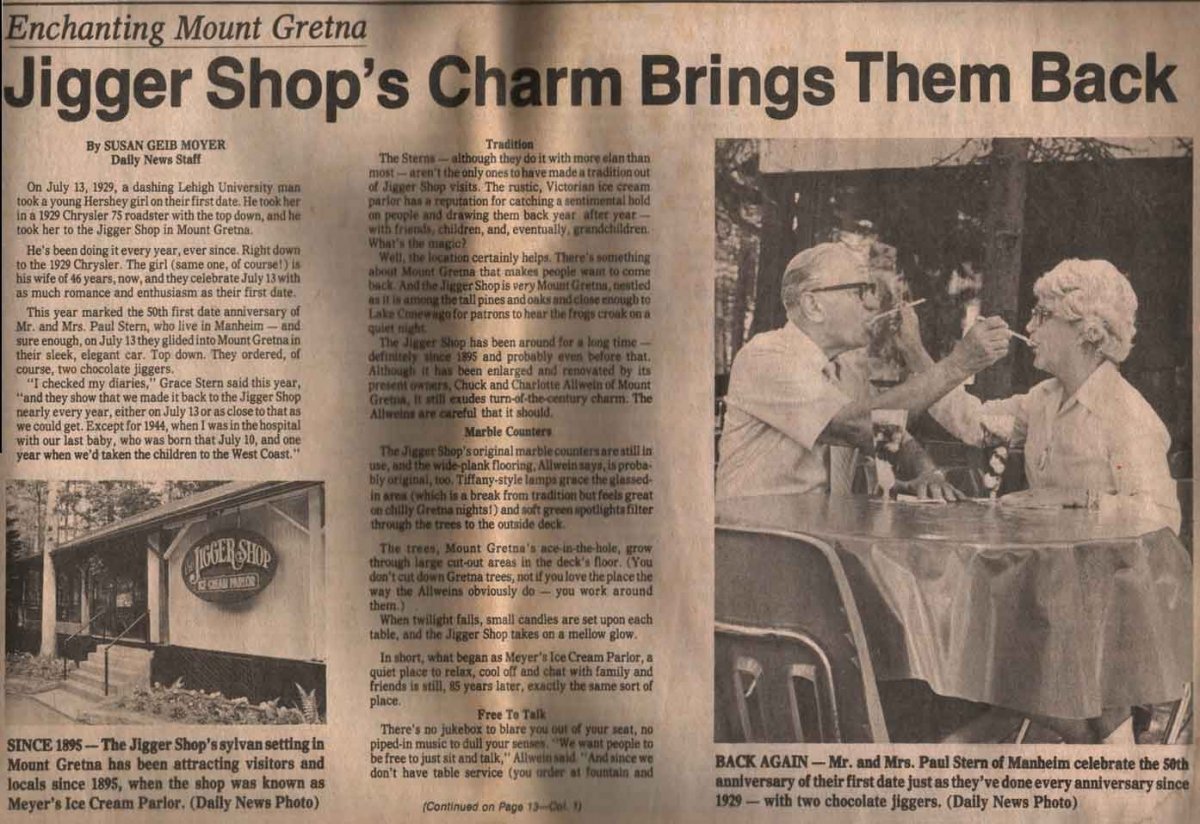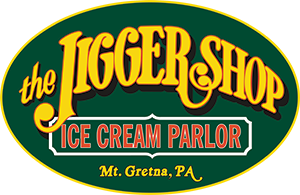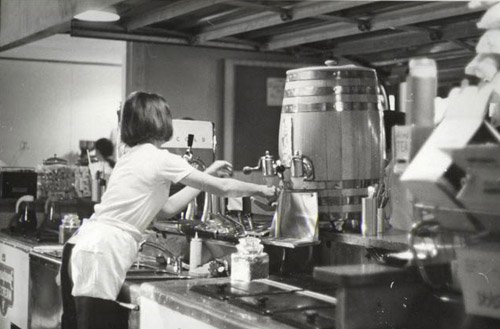
Our History
Near the southwest corner of Lebanon County, nestled into the South Mountains of Pennsylvania, is a small community that for many years has become a very special place to people from all areas of our country.
Mt. Gretna was conceived and hued out of this woodland region during the period of 1882-1885. In an effort to locate railroad stations between Cornwall and Colebrook. Mr. Robert Coleman, owner of the Cornwall ore empire and its railroad lines, took an interest in this place and caused the development of this area for a picnic grove which rapidly developed into a summer community.
In 1885 it was decided that the Pennsylvania National Guard would use 120 acres of this area as its summer encampment site. This proved to be so satisfactory that it was 1935 before this area was abandoned for the more suitable Indiantown Gap area.
Soldiers’ Field Encampment
By 1885 Mt. Gretna was destined to be a lasting tribute to its founders. Steadily improvements were made. The lake was produced by damming the Conewago Creek. The railroad station was completed, eventually boasting of a six-track siding. The park was expanded and many written accounts attest to its popularity.
Through the efforts of Mr. Robert Coleman, a Narrow-gauge rail line was laid from the park, located in back of the present miniature golf course. This line ran up the mountain to Governor Dick tower. Governor Dick was a popular lookout, overlooking four counties.
This area is still a favorite hiking spot and is particularly beautiful in the fall. A cement tower located there allows one to survey 2000 square miles. Many words could be used to describe Mt. Gretna during the latter part of the 19th century, but for the sake of authenticity and to capture the charm of the day, several passages have been chosen from a brochure printed by the Cornwall and Lebanon Railroad at the turn of the century.
Mount Gretna, a spur of the South Mountain range, with its over 5,000 acres of open park, nearly midway between Conewago and Lebanon, is the pride of the Cornwall and Lebanon R.R. For nigh on to a score of years, the section over which it spreads has been noted as one of Pennsylvania's choicest. Its altitude, primitiveness, healthfulness, beauty, and accessibility have spread its renown. It is now visited annually by pleasure, education and health seekers from every portion of the United States, and its popularity is rapidly increasing.
The flora of Mount Gretna is exceedingly rich and varied; a noted botanist has said that he knows of no section in the Middle States where a greater variety and rarer specimens of plants and flowers can be found than upon these mountains, in the very heart of which is this beautiful park. Down a pleasure trodden path, or circling by the Narrow Gauge R.R. grade, upon a rolling and wooded plateau lying between summits of mountain ranges, is the rustic station, Mt. Gretna.
From it a wide telfordized avenue opens through ornate iron gateways into the Park. It is free to all comers, and lavishly complete in all that fives pleasure, convenience, and comfort to picnicker and rambler. Immense dancing and skating pavilions, commodious toilet rooms, kitchens without charge, fuel without cost, fountains, walled springs of the purest water, baggage rooms, a bureau of information, telfordized avenues, rustic seats, innumerable tables where family parties may lunch content, lovers walks and retreats, all creditable to the liberality and taste of the C & L R.R. A large airy dinning room and restaurant invites guests. The ice cream, melon and soda water booths are cozy and artistic. A long toboggan, wavelike, stand high up in the air. Swings abound. A stream driven flying menagerie whirls in giddy flight. A shooting gallery, a bowling alley, a ball ground with covered stand are ready for muscle and skill.
Narrow-Gauge Engine
Summer programs which expanded into a community way of life were undertaken by two separate organizations, the Mt. Gretna Campmeeting Association and The Pennsylvania Chautauqua. Both have endured the rigors of time and are today very active in attaining the goals set forth in their charters. The Mt. Gretna Campmeeting Association, consisting of 30 acres purchased from Mr. Robert Coleman, held its first Mt. Gretna conference in August of 1892. From this beginning a community with deep religious conviction sprang. In early days it consisted of an inner circle, sometimes called a temple, with a pulpit and rough board seats surrounded by tents to house the participants. Accommodations were sparse. The will to follow their convictions was the driving force. This rudimentary beginning expanded to a community of cottages with the primary goals of religious retreat in mind.
By 1899, the year the Campmeeting auditorium was built, the grounds were well established. the community was well on its way to the organization level it enjoys today. At present it consists of several hundred cottages centered around the large outdoor tabernacle. For those not familiar with Mt. Gretna, it lies in the southeast quadrant of Mt. Gretna. Students of history are usually exposed to the Chautauqua movement in this country. In the year 1874 a summer institute for the teaching of Sunday school teachers was started at Lake Chautauqua in western New York State. This endeavor grew in popularity and dimension until in encompassed all the arts and sciences. This idea spread to many parts of the country and Chautauqua groups sprang up in rapid succession. One such group was spearheaded by a meeting in Mt. Gretna Park during the summer of 1891.
A suggestion for a State Chautauqua was discussed at this meeting. During the course of that summer it was decided Mt. Gretna was the ideal place for such a Chartauqua organization. On January 13, 1892, a charter was granted to the Pennsylvania Chautauqua for the purpose of: "The advancement of literary and scientific attainment among the people, and the promotion of popular culture in the interest of Christianity." Robert Coleman sold 80 acres to the Chautauqua for the sum of $3000.00. Cottages and public buildings sprang up rapidly. In 1898 the circular auditorium and the Inn were erected.
At night electricity shames the moon, and gives to the grounds a light second only to that of the sun. Winding along and up the mountain runs the Narrow Gauge R.R. to carry open carloads of visitors through mountain scenery. And three hundred yards away, fed by as pretty a stream as ever gave home to trout is Lake Conewago, with shallow depths for those who would bathe and scores of boats waiting for those who would row. Picnic parties, family groups, and Sunday Schools come to this unrivalled place, because of its beauty, easy access, good name and order. At the same time other activities were taking place in Mount Gretna which have proved to be further reaching than the hustle and bustle of the immediate time.
The Canoe Landing at Conewago Lake
The Inn, no longer standing, was at the site of the theatre parking lot. In 1909 the Chautauqua Community Building was erected. The Chautauqua program was also full tilt. The 1892 season brought a total of 8,798 people. Tents, single rooms or cottages could be rented. Meals could be purchased by the season or by the meal. Tickets were necessary for all public events. Advertisements stated that tickets covered at least sixty first-class entertainments and sixty good lectures. During the second year in 1893, seventeen different courses were offered. In 1894 a Buffalo NY newspaper stated that the Pennsylvania Chautauqua has attained the highest rank among the nearly 100 sister Chautauquas in the country. Financial problems were always present for the Chautauqua. After World War I the state no longer subsidized the Chautauqua program. Colleges were offering "credit" courses on the campuses and thus, little by little the Chautauqua program as previously described came to a halt.
Mount Gretna Inn
Energy was turned from the Chautauqua movement to activities producing a summer community and later a year round community. But the impact of the Chautauqua movement has never been forgotten. It is still carried on as one can attest to by looking at the schedule of events for a typical summer. Today finds the Pennsylvania Chautauqua an 88 acre wooded area containing approximately 200 homes, numerous wooded parks, a variety of recreation and cultural facilities and activities, a community water ad sewage system and most of all an environmental uniqueness that grows every day.
The Mt. Gretna Heights area, although smaller in acreage than the Campmeeting or Chautauqua, is also an important part of Mt. Gretna and its history. The land, 20 acres, was purchased from the Coleman's in 1897 by a private individual and was transferred several times until a gentleman by the name of A. L. Kauffman purchased it in 1907. Mr. Kauffman erected an entertainment complex consisting of a hotel, a dance hall-movie theatre, a store, an amusement park and a swimming pool. The homes in the Heights grew up around the perimeter of the Kauffman enterprise and are a lasting tribute. Because of its unique community ties, the Heights also has a civic organization with an elected board of directors to control its activities. West of the lake is a small community which call itself Conewago Hills. It is located on the lands once occupied by the Conewago Hotel.
The Conewago Hotel was built in 1909 on 10 acres of land purchased from the Coleman estate. This large 100 plus room hotel was built just west of the lake. The hotel was demolished in 1942 after a number of years of abandonment. The land was purchased privately and re-sold in lot size parcels. Conewago Hills, in trying to maintain the inherited beauty of its area, also has a land organization which guides and guards this unique area. The most recent addition to the Mt. Gretna community is the area called Timber Hills, north of the Chautauqua, This area, once occupied by the army, changed hands several times and is now being developed into a tasteful residential area. And so Mt. Gretna lives on. Perhaps in many ways it is not as magnificent in its attractions as it was in past years, but certainly it has maintained a culture and way of life that has faded from most areas of this country. It may be difficult to pinpoint its attracting qualities, but the continued interest shown by its ongoing popularity is a tribute to all who have labored to make it something very special to many people.
The Conewago Hotel

Narrow-Gauge Engine, scenic woodland tours by rail

At the station

Soldiers' Field Encampment

The Narrow-Gauge Railroad

The Post Office

Muhlenberg Avenue

Mount Gretna Inn

Narrow-Gauge engine in front of typical 'twig' shed

The Ebright Cottage

The Conewago hotel - circa 1910's

A lovely view of 'The Lake' from the Conewago Hotel.
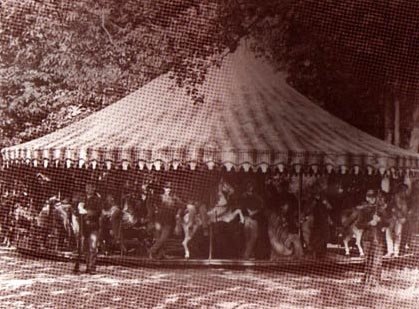
Carousel - Mt. Gretna amusement park

The canoe landing

The original Myers Pavilion
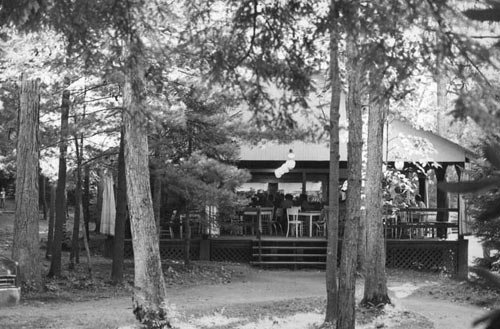
The Jigger Shop before the deck was added
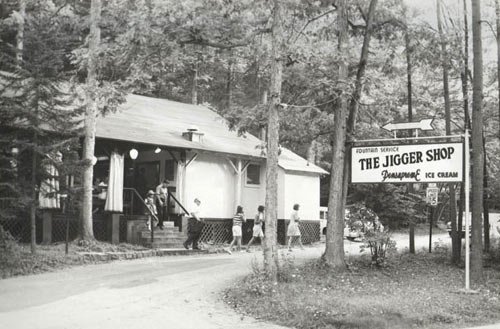
The Jigger Shop circa 1960s
